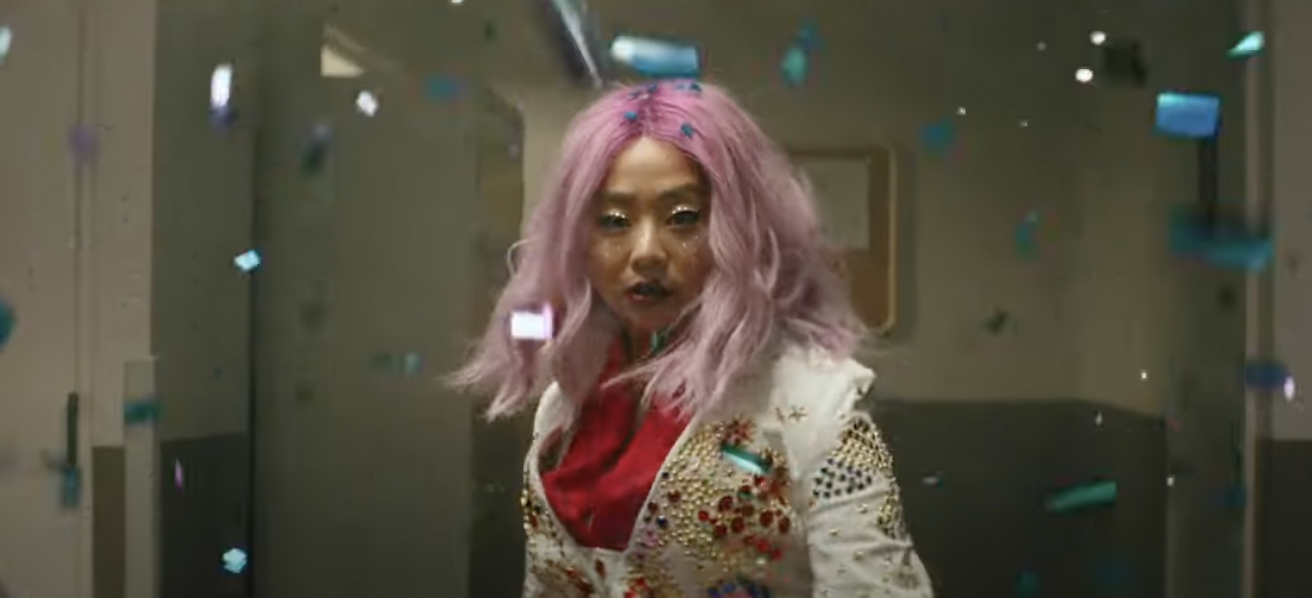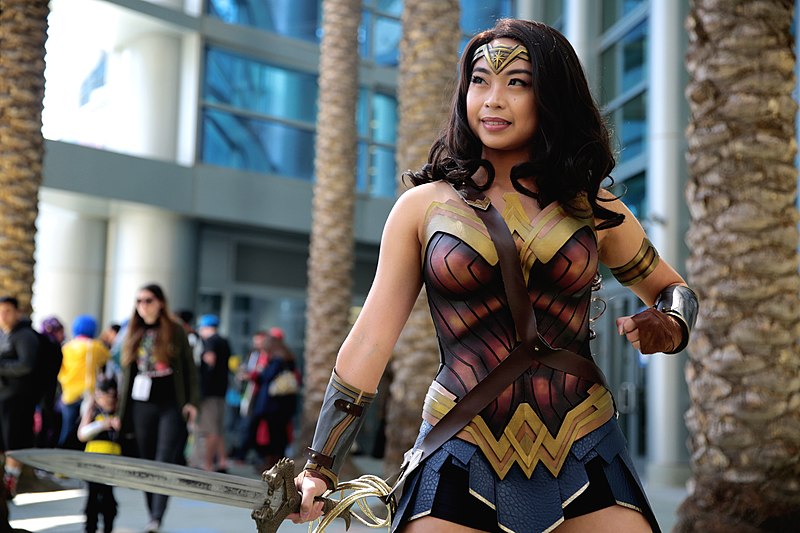Books & Culture
‘Rebel in the Rye’ Can’t Escape the Image of the Author as Solitary Genius
Though it tries to complicate J.D. Salinger’s story, the film ends up endorsing an insular view of the artistic process

Danny Strong’s Rebel in the Rye opens with a shot of the trembling hands of J.D. Salinger as he tries to jot down something — anything — on the page. But, as we learn soon enough, the young writer is haunted by the trauma of having been deployed in World War II. His experiences abroad and at the camps have left him unable to revisit the character that he’d carried with him across the pond and back: Holden Caulfield.
By the time the movie ends, we’re offered a much more hopeful image: Salinger, decked out in his signature blue boilersuit, is typing furiously away, filling up page upon page with an ease that’s near-intoxicating. The fears (of failure, of being ignored, of being misunderstood, or worse yet, feverishly loved) have given way to a renewed sense of accomplishment. But it’s a sense of accomplishment that’s decidedly not tied to the promise of being published. Those pages will never be read, alas, by the public at large. At the heart of both images — a writer whose words have failed him, and a writer whose words overwhelm his every waking hour — is the romanticized ideal of the writer as a solitary figure, either fighting with or conversing with his muse. For many of us, this has been the quintessential image of our writer heroes — and one Salinger himself fully gravitated towards and endorsed. Despite some attempts to complicate the Great Man theory of writing, the film ultimately endorses the vision of Salinger as a solitary genius.
Based on Kenneth Slawenski’s biography of the reclusive author, the film tracks Salinger’s move away from the spotlight and away from the published page. And, as its initial images suggest, it puts front and center the fact that Catcher in the Rye was quite literally a post-war novel. Catcher’s battlefield birthplace was what originally drew Strong to the material. “When I got to the war [section in Slawenski’s book] — when I learned that Holden Caulfield was written by a veteran who had PTSD, it kind of blew my mind,” he said at a post-screening Q&A in New York City ahead of the film’s release “This idea that one of the most iconic novels of the twentieth century, that so many high school students read and it affects them profoundly decade after decade after decade, was written by someone who’d come out of one of the worst experiences of the 20th century — I thought, that was very beautiful, very profound.” In Strong’s film, Salinger’s experiences as a soldier mark the central narrative pivot of the writer’s life story. Rebel in the Rye tracks how the talented young Jerome David (played by Nicholas Hoult) went from being an obnoxious Columbia student with dreams of becoming a published author to a recluse who needs nothing more than his typewriter to feel fulfilled. With the war working as the catalyst for this transformation, Salinger’s near zen-like devotion to his writing emerges as palliative practice that helps him overcome his PTSD by urging him to look within, to anchor his process in and for himself.
Salinger has become a poster man (surely we couldn’t possibly refer to him as a “boy” in any sense) for the supposedly awe-inspiring writerly integrity he embodied until his death in 2010. Here was, after all, a writer who rebuked fame and found fulfillment in writing for himself. When a reporter at the Q&A asked Strong whether he could live like that, knowing anything he wrote would never be read by anyone else, he couldn’t help but rehash ready-made soundbites about what writers are supposed to cherish: the practice, never the result. A professional writer he said, isn’t a writer who gets paid for her work; “a professional writer is someone who writes every day whether you get paid or not.” Strong’s film is, he claims, an attempt to tell the story “of what it means to be a true artist,” someone willing to write and not make anything from it for the rest of their life. This is a particularly insidious vision of artistic creation — one that doesn’t question the privilege that Salinger and his Great Man narrative have come to represent. This facile view of art ultimately weakens the film, as it reduces it to little else than a portrait of an artist as a young (and independently wealthy) man.
Support Electric Lit: Become a Member!
Following its protagonist’s lead, Rebel in the Rye cannot help but embody not just Salinger’s increasingly individualist and self-absorbed notion of writing, but his overwhelmingly masculinist sensibility. While women in his life first encouraged his work (his mother, played here by Hope Davis, was an early supporter of her son’s sudden whim to become a writer), Salinger’s relationships with women as he grew older and more well-known are presented as mere stepping stones for his career. The heartbreak he feels when his youthful lover Oona O’Neill (yes, Eugene’s daughter, played by Zoey Deutch) marries Charlie Chaplin while he’s at war almost destroys him, but also helps fuel his ambition. Writing becomes a way to keep himself sane and plow through his sense of betrayal. Likewise, his first wife, a European woman who may or may not have been a Nazi (the film neither confirms nor denies the accusation, but does use it as a punchline to introduce the accented beauty), is a mere footnote to his return home. His second wife is supportive, if aloof, but is presented as a hassle once she asks him to do the absolute minimum when it comes to building their family together. All Salinger cares about is his writing (“I want my writing to be truthful,” he never tires of repeating to anyone who’ll listen) and he spends his years stripping away his life in order to accommodate an understanding of writerly devotion that required only him.
Rebel in the Rye cannot help but embody not just Salinger’s increasingly individualist and self-absorbed notion of writing, but his overwhelmingly masculinist sensibility.
A crucial part of that narrative arc was, implausibly enough, Salinger’s relationship with his Columbia professor and Story journal editor, Whit Burnett (Kevin Spacey). There is no way to tell the story of this Solitary Great Man, apparently, without giving due credit to one of the many men who gave him a leg up — even as the women who were just as crucial to Salinger’s success remain sidelined. Rebel in the Rye tracks Salinger and Burnett’s relationship from their playfully combative exchanges in the classroom and eventually through their personal and professional fallout, when Burnett disappoints the ambitious up-and-comer by failing to secure a publishing contract for what would end up becoming Salinger’s Nine Stories. Burnett is shown to be instrumental not only in championing Salinger’s earlier efforts, publishing his first story in Story, but in nurturing and improving the young writer’s work. He pushes Salinger to move away from letting his work be driven by his self-amused and cocky voice and find instead a way to let his wise-ass sensibility help tell a story. Driven by his desire to publish — anything, anywhere, but preferably in The New Yorker — Salinger learns to revise and edit his work; he buckles down and begins seeing the world around him (say, a scene at a bar where he feels out of place) in narrative rather than merely scenic terms; this is what yields the 21 year-old’s first published story, “The Young Folks.”
Burnett is also presented as the first to suggest that Holden Caulfield deserved a novel of his own. Catcher in the Rye, Strong’s film suggests, couldn’t have come together had Burnett not urged his young pupil to let go of his impatience when it came to writing, encouraging him to see his breakthrough novel as a marathon worth running — and a better use of his talent than the quick sprints he so enjoyed when writing short stories. Burnett’s encouragement is what led Salinger to take Holden with him when he crossed the Atlantic to fight in World War II, an experience that resulted in making the phony-hating protagonist a postwar cultural staple. Burnett sanded down the impetuousness that made young Salinger both an insufferable cad and the kind of wunderkind that lead people to dismiss his personal shortcomings as necessary elements of his genius.
How Do You Convince the Most Solitary Person in Human History to Trust You?
If Burnett had not led the young writer to discover and embrace the beauty of editing and revision, the film suggests, we’d never have gotten as strong a version of Salinger’s work. It’s a lesson he only begrudgingly learned. When his agent, Dorothy Olding (Sarah Paulson) giddily tells him that The New Yorker is eager to publish a piece of his, she hesitates before adding, “they have some notes.” Salinger bristles at the thought, unable to see how someone else’s ideas could possibly enrich his own. It is only after he meets with the editors at their imposing Manhattan offices — and they promise him that he can pull the story if he thinks the changes ruin it — that he agrees to give it a shot. He is as surprised as anyone when he realizes that responding to feedback actually improves his writerly output.
Strong’s film truly comes alive in these scenes. Shots of Hoult, hunched over Salinger’s typewriter, feverishly cutting and marking his manuscript with a red pen are punctuated with Bear McCreary’s soaring score in the background. You can tell the actor/writer/director/producer (and co-creator of Fox’s Empire) cherishes that most sacred of writerly rituals: revision. By the time Salinger is done, he’s earned one of the most coveted publishing contracts in the United States — a first-look deal with The New Yorker — and, perhaps more importantly for a man obsessed with his own writerly identity, he’s produced a story he’s proud of. Sadly, anyone who knows Salinger’s story — the overnight success of Catcher; his increasing discomfort when meeting his super-fans; the decision to move away from the city, live in seclusion, and all but forsake his publishing career — this glorious celebration of the power of collaboration is short-lived. And though the revision scenes and the movie’s centering of Burnett display an interest in highlighting the collaborative nature of authorship, Rebel in the Rye is ultimately seduced by the idea that great writing is the product of a single lonely, brilliant mind.
Here lies a tortured genius finally left to his own devices and away from his biggest threats, his fans.
After all, the film must careen towards that final tableau where a now-at-peace (and divorced) Salinger can happily find serenity in writing. It is an insidious image on which to hang the Catcher in the Rye’s legacy, and yet one which feels unavoidable: here lies a tortured genius finally left to his own devices and away from his biggest threats, his fans.
In an early scene set in Burnett’s classroom, the affable teacher tells his students he’s leaving early that day, having been satisfied with the wisdom he’d imparted in the first few minutes of class. They can, he tells his students, do what they wish with their free time — like, say, writing, or masturbation. “Just be sure you know the difference,” he quips. Try as it might, the film’s final images, of a blissfully satisfied Salinger clanking away at his typewriter in his signature blue boilersuit in his secluded office, somehow do mistake the former for the latter — and all but endorses this hermetic vision of creation. This may look like writing, but it lacks a key aspect of that endeavor: the reader.








